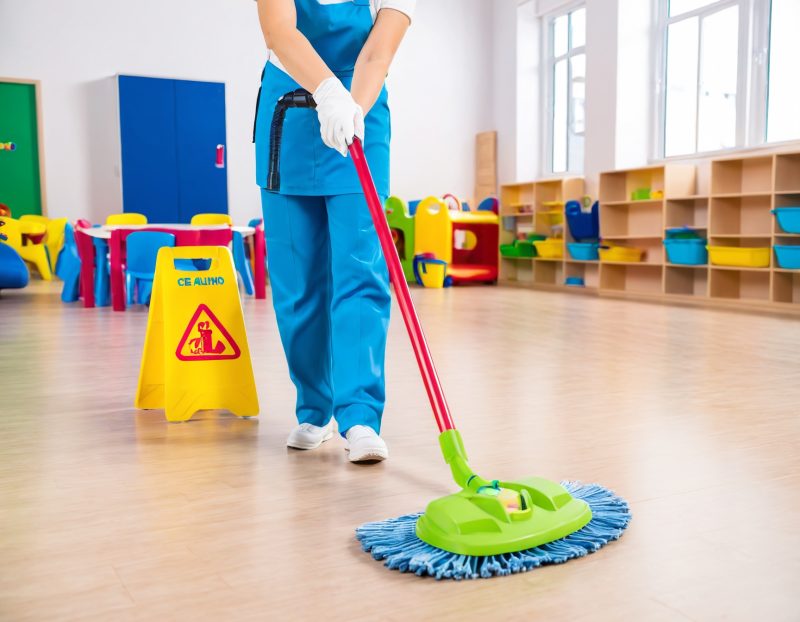
Learn sustainable child care centre cleaning practices to ensure health and safety. Discover effective cleaning solutions from our team at AUSTCM today.
Child care centre cleaning is crucial for fostering a safe, healthy environment for young children. The unique vulnerabilities of kids in group settings underscore the importance of thorough, regular cleaning practices. However, modern child care centre cleaning goes beyond mere sanitisation—it embraces sustainable methods that protect both children and the environment.
Effective child care centre cleaning balances rigorous hygiene standards with eco-friendly practices, ensuring the well-being of little ones while minimising ecological impact. From choosing non-toxic cleaning agents to implementing water-saving techniques, sustainable child care centre cleaning practices are revolutionising the industry.
Discover how innovative approaches to child care centre cleaning from AUSTCM are creating safer, greener spaces for our children to learn and grow, setting new standards in early childhood education environments.
The Importance of Child Care Centre Cleaning
Keeping child care centres clean is vital for several reasons. Here, we delve into three key aspects:
• Protecting Children’s Health – Child care centres are prone to germs due to close contact among children. Regular child care centre cleaning and disinfecting reduce illness, keeping children healthy. Properly sanitising surfaces, toys, and play areas lowers the spread of common colds, flu, and other diseases.
• Ensuring a Safe Environment for Play and Learning – A clean environment is crucial for children’s safety. Spills and clutter can cause injuries. High cleanliness standards ensure a safe space for children to explore and play, fostering security and well-being for their development.
• Building Trust with Parents – Parents entrust child care centres with the safety and well-being of their children. By maintaining a clean and hygienic environment, centres build trust and confidence with parents. Visible cleanliness and hygiene practices reassure parents that their children are in good hands, which is crucial for the reputation and success of the centre.
The Need for Sustainable Cleaning Practices
Traditional cleaning methods often involve harsh chemicals that can be harmful to both human health and the environment. Sustainable cleaning practices focus on using eco-friendly products and methods that minimise these risks. This approach not only protects the health of children and staff but also reduces the environmental footprint of the child care centre. Sustainable practices include using biodegradable cleaners, reducing waste, and ensuring proper disposal of cleaning materials. Adopting these methods demonstrates a commitment to the well-being of the community and the planet.
Key Elements of Sustainable Cleaning in Child Care Centres
Implementing sustainable cleaning practices involves several key elements. Here are three crucial aspects to consider:
• Use of Eco-Friendly Cleaning Products – Switching to eco-friendly cleaning products is the first step towards sustainability. These products are free from harmful chemicals and are biodegradable, reducing the impact on the environment. They are also safer for children, preventing exposure to toxic substances that can cause allergies or respiratory issues.
• Green Cleaning Protocols – Developing and adhering to green cleaning protocols ensures consistent and effective cleaning practices. This includes using microfiber cloths that trap more dirt and reduce the need for chemical cleaners, and employing methods that conserve water and energy. Regular staff training on these protocols is essential to maintain high standards of cleanliness and sustainability.
• Waste Reduction and Proper Disposal – Minimising waste and ensuring proper disposal of cleaning materials are critical components of sustainable cleaning. Centres can implement recycling programs and use reusable cleaning supplies to reduce waste. Proper disposal methods for hazardous materials, such as certain disinfectants, prevent environmental contamination and promote a healthier ecosystem.
Optimized by: Netwizard SEO

